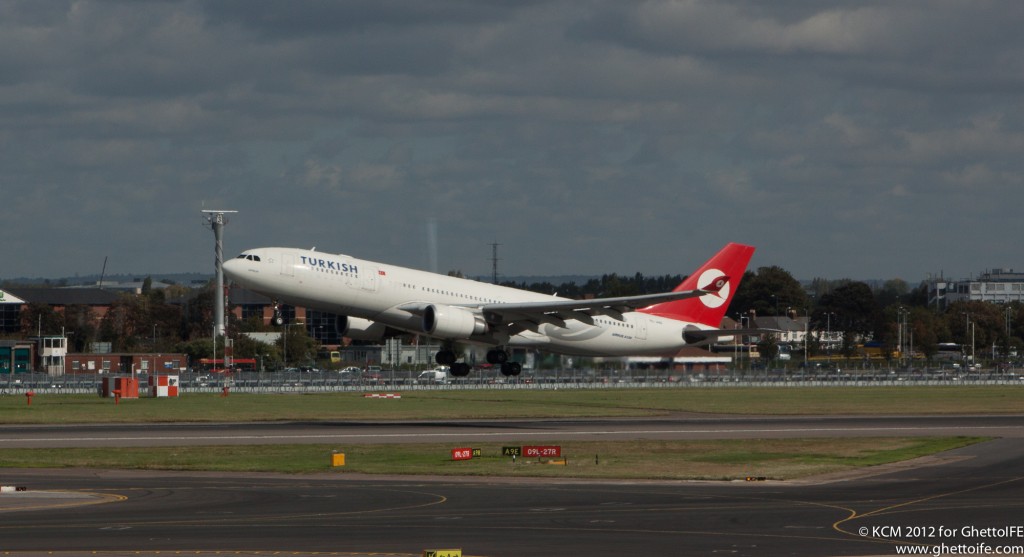As Malaysia Airlines continues to reinvent itself, competitors continue to bite at its heels on different routes.
Turkish Airlines will be upping their commitment to Kuala Lumpur – by adding an extra 3 services a week between Istanbul and Kuala Lumpur

Turkish Airlines Airbus A330-200 departing London Heathrow Airport – Image, Economy Class and Beyond
This will allow for a total of 10 flights a week between the two cities operating on Mondays, Wednesdays and Saturdays (returning one day later), operated with flight pair TK62/TK63 from the 26th October 2015.
The combined timetable is shown below:
TK060 DEPART IST 01:00 ARRIVE KUL 17:25 Airbus A330 (Daily) TK062 DEPART IST 18:30 ARRIVE KUL 10:55+1 Airbus A330 (Mondays, Wednesdays and Saturdays) TK063 DEPART KUL 12:25 ARRIVE IST 17:55 Airbus A330 (Tuesdays, Thursdays and Sundays) TK061 DEPART KUL 23:25 ARRIVE IST 05:00+1 Airbus A330 (Daily) Commences 26th October 2015 TK60/TK61 operates daily with an Airbus A330-300 TK62 operates Mondays, Wednesdays and Saturdays TK63 operates Tuesdays, Thursdays and Sundays Data: Airlineroute
Whilst its a modest increase in capacity, it is a sign that Malayisa Airlines competitors are looking at Kuala Lumpur International Airport carefully as a destination to see if there is a chance to steal traffic.
By deploying three extra flights a week, Turkish Airlines can try out the market to see if this is the way they want to go… or if they want to go back to only operating a daily service only.
Expect other airlines to be sniffing around routes to Kuala Lumpur to see if they can take advantage of the situation…
Welcome to Economy Class and Beyond – Your no-nonsense guide to network news, honest reviews, with in-depth coverage, unique research as well as the humour and madness as I only know how to deliver.
Follow me on Twitter at @EconomyBeyond for the latest updates! You can also follow me on Instagram too!
Also remember that as well as being part of BoardingArea, we’re also part of BoardingArea.eu, delivering frequent flyer news, miles and points to European readers